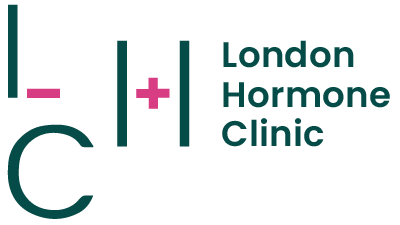Patches, Pills, and Pessaries - The Choice Should be Yours.
Pill, patch, cream, or gel. There’s a cacophony of voices out there telling women which type of HRT is safer, and which they should use, but there’s just one thing women need to know and it’s this… much of what they’re reading is false. It’s outdated. It has no basis in fact. And shockingly, even though women now feel more empowered, as a society, we’re actually being grossly misinformed.
“I may as well have a vending machine in the waiting room”, says Louise, a GP in the Midlands, “patients come in telling me exactly which cocktail of HRT they want, or need, and which type is ‘safer’. They even bring in articles as ‘evidence’. It’s great that there’s more information out there, but I sometimes wonder why I’m here. Patients trust what they see in the media more than me.” A situation which is, without doubt, repeated up and down the country, and indeed across the world.
The one thing you need to know…
Whether you swallow oestrogen in the form of a tablet, absorb it through your skin in a gel, patch, or film, or take it vaginally, it doesn’t matter. If this oestrogen is body-identical, and in most cases what you are prescribed is, then it is equally safe. Yes, you read that correctly. Pills, gels, and tablets are equally safe.
So why so much choice?
The reason there’s so much choice out there is simply for choice. Some women prefer gel because they can better control the amount they use, whilst others hate the feeling of it on their skin. Women with young children and pets often ask for tablets so there’s no risk of transferring their medication to others through skin contact, and swimmers usually prefer to ingest hormones rather than risk washing them off their skin before they’ve been absorbed. The key thing is that whatever the formulation, administering these hormones should be easy and fit in with life.
Body and bio-identical hormones
We now know that all types of HRT are equally safe IF they are body or bio-identical, but what do we mean by that? When we talk about body, or bio-identical hormones, we’re talking about ones that have exactly the same chemical structure as hormones the body itself makes. This means they fit the body perfectly and come with no side effects, if properly and appropriately prescribed. These hormones differ from synthetic hormones because in synthetic hormones, the progestogen component is man-made and because of that, differs from the progesterone the body makes. It is this synthetic progestogen hormone that is responsible for ALL the potential side effects in HRT and the potential risks such as strokes, blood clots, and cancer. Every single study into this - and there are thousands of them now – has come to the same conclusion that all body/bio-identical hormones are safe.
Transdermal vs Oral - an outdated argument
So, if all types of oestrogen (patch, gel, pill…) are equally safe AND body/bio-identical hormones come with no side effects or increased risk, then why do so many people (menopause gurus, influencers, and frontline health workers included) still believe that hormones that are absorbed through the skin are safer than those that are swallowed? And worse still, still preach that? It’s a question we ask ourselves daily.
One of the most incorrect statements out there, apart from the ‘fact’ the earth is flat, is the one that states that transdermal oestrogen is safer than a tablet. It’s not. That belief relates back to some of the first studies into this which compared an oral tablet that had, what we now know to be, a highly toxic progestogen component, with a transdermal formulation in which the progestogen was safer. The comparison was fundamentally flawed and given this highly toxic component is now rarely prescribed, the results are, in this day and age, completely meaningless.
What’s more…
Swallowing oestrogen has been proven to be the best way to mimic what the body’s own oestrogen would do, and because of that it has the most beneficial impact on the body’s lipids and metabolism, and that’s important. Why? Because one of oestrogen’s crucial roles in the body is to maintain good cholesterol levels and keep blood vessels healthy – both of which help to prevent heart disease, the biggest killer of women in the UK. That’s not to say that gels and patches don’t have their place, they do, but women who show signs of insulin resistance, early onset diabetes, and cardiovascular disease should consider taking a tablet over anything else, as it offers them the best protection.
So, the next time you scroll through socials and see people preaching about their gels or films, scroll on. The next time you see the debate about oral vs transdermal raging in the media, step away. Hormone treatment, much like the way women experience symptoms, is highly personal and the only thing that really matters is that the treatment you receive is the one that is right for you.

